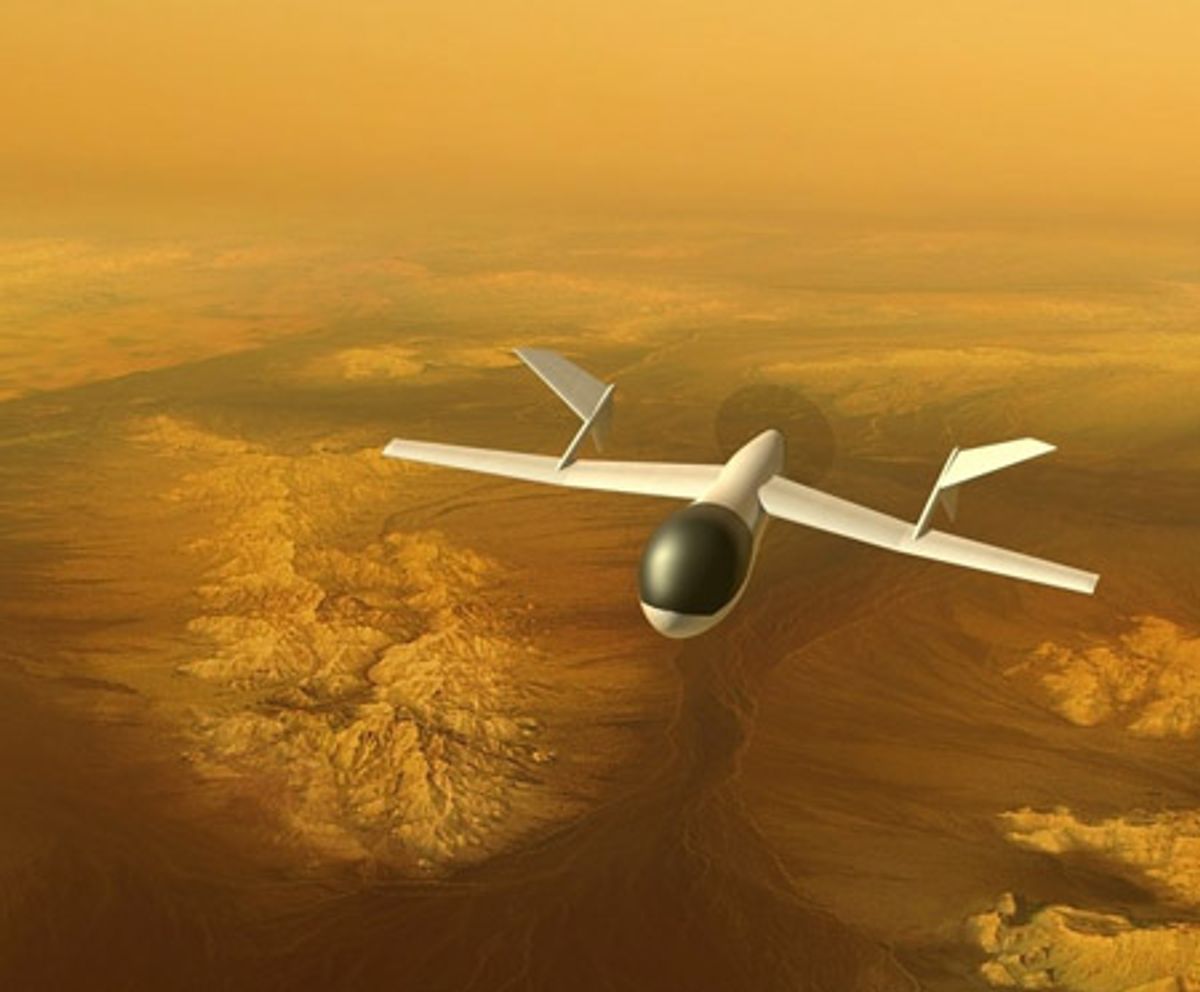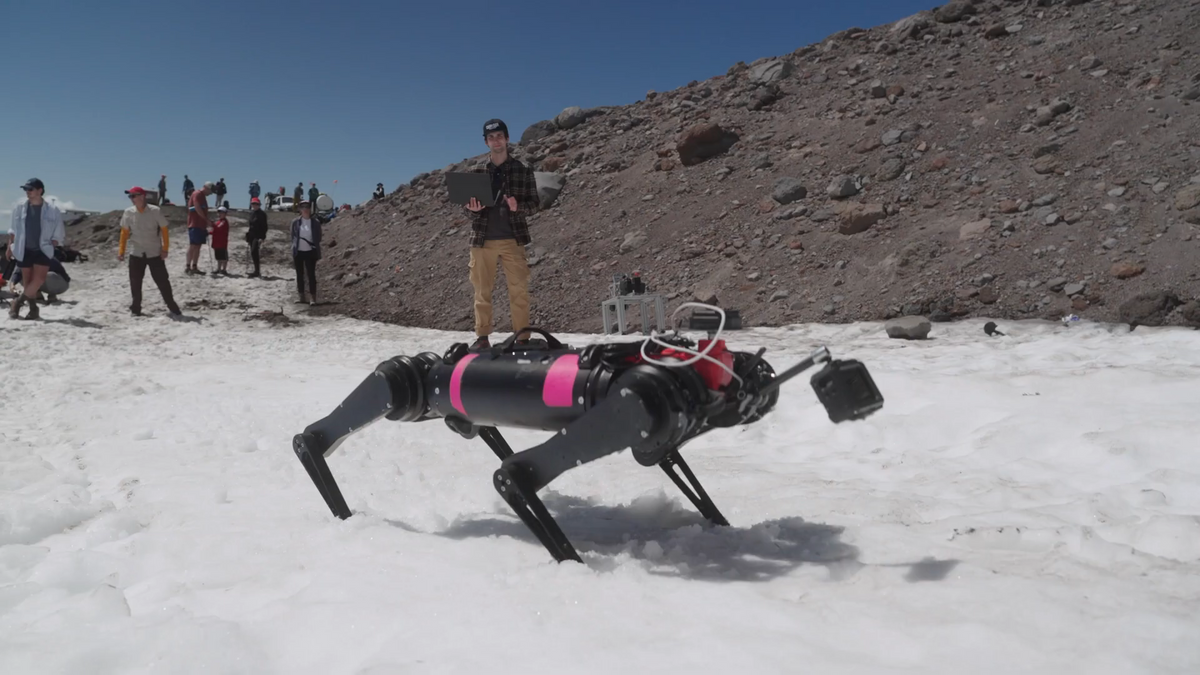The surface of Titan, one of the moons of Saturn, is a bizarre place, as the Huygens probe found out back in 2005. There are hydrocarbon lakes kept full by methane rain, with volcanoes that spew mixtures of water and ammonia. It's definitely strange enough that we should take another look at the place, and a mission being proposed by a group of scientists would send an airplane there to cruise Titan's nitrogen skies.
This mission (it's just a proposal at this point) is called AVIATR, and it's designed to be one of those (relatively) cheap New Frontiers missions that can be made to happen for under three-quarters of a billion dollars. AVIATR, thanks to NASA's penchant for strained acronyms, stands for "Aerial Vehicle for In-situ and Airborne Titan Reconnaissance." The overall idea is that instead of a lander or a rover, AVIATR would be a little 120-kilogram airplane driven by an electric propeller, with a big antenna for talking to Earth in its nose and a hefty science payload in its body. In flight, AVIATR would be able to cover much more ground with its instruments (including Titan's equator and poles), sending back way more data about the moon as a whole. It wouldn't be able to get as close as a lander or a rover, but it could survey literally the entire surface, with much more precision, detail, and versatility than an orbiter.
Titan is a planetoid that's uniquely qualified for exploration by a heaver-than-air craft, for one simple reason: It's really, really easy to fly on Titan. Compared to Earth, Titan has an atmospheric density that's four times greater, combined with gravity that's seven times less, making it 28 times easier to fly on Titan than on Earth, and about 1,000 times easier to fly on Titan than on Mars. Heck, you could practically fly on Titan with a Batman costume on.
This means that AVIATR can be heavy and robust and still have no problems keeping itself aloft for a year, using a pair of radioisotope generators for power. Furthermore, Titan rotates slowly enough that by flying west, AVIATR could keep itself pointing at Earth more or less all the time, never having to worry about being out of contact on Titan's night side. And lastly, AVIATR can use its ability to fly as a battery of sorts, "charging" itself up with altitude and then gliding slowly down while using engine power for other tasks, like transmitting data back to Earth.
The time frame we're looking at for AVIATR is a ways off. Like, NASA might take a look at the proposal sometime around 2020, when it decides whether to make exploration of Titan a priority. If AVIATR does get chosen, it'll take it about seven and a half years to get from Earth to Saturn, and figuring in the construction time, we might be looking at a Titan visit around 2030, which is a bit disappointing. But, the hope is that by building support early, AVIATR will be a sure thing for NASA within the next decade. For what it's worth, this project has our vote.
[ Proposal (PDF) ] via [ Universe Today ]
Evan Ackerman is a senior editor at IEEE Spectrum. Since 2007, he has written over 6,000 articles on robotics and technology. He has a degree in Martian geology and is excellent at playing bagpipes.



